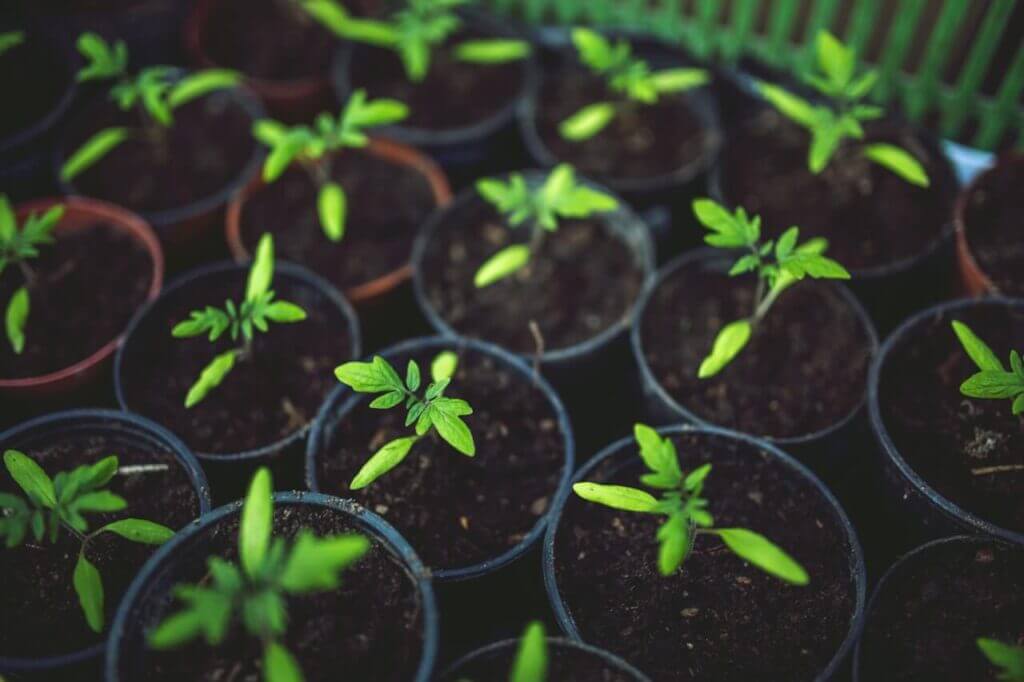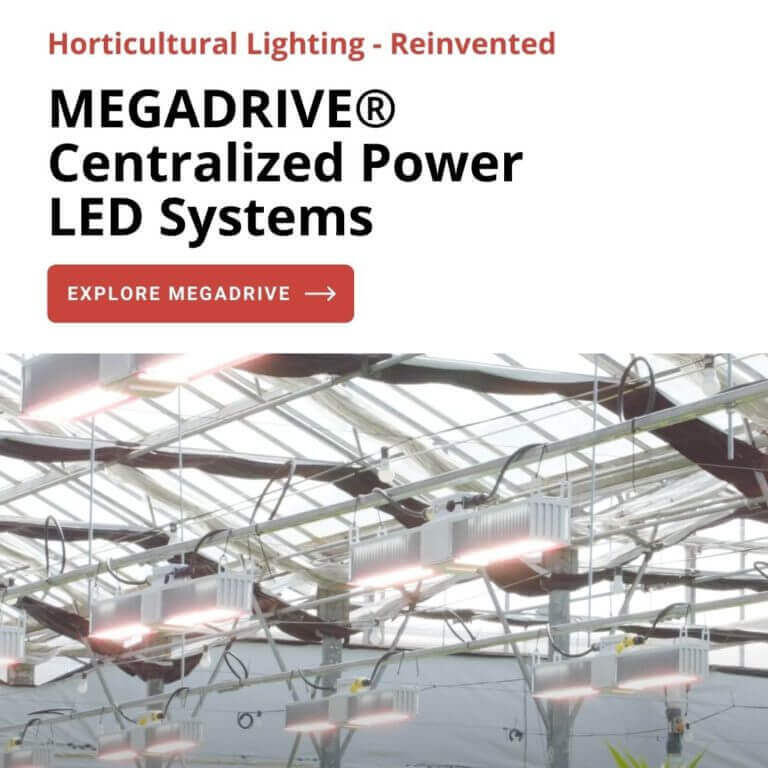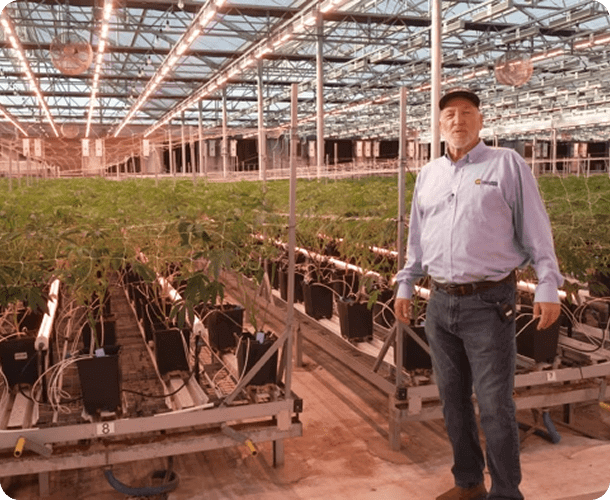Thanks to advancements in LED grow light technology, the landscape of indoor and greenhouse gardening will never be the same again. No matter the crop, the size of the operation, or the local climate, gardeners all over the globe are making the transition to LED lighting. In fact, a market report from Navigant Research speculates that LED light shipments to growers worldwide will grow at an annual rate of 32% from now until 2027.
So what accounts for the rapidly increasing interest in LED grow lights?
While the environmental benefits of LED lighting are well known and much discussed, spectrum variability plays perhaps the biggest role in the LED revolution. Now that gardeners can control the light spectrum their plants experience, they can more accurately replicate the sun indoors and manipulate a wide range of outcomes, from how quickly their plants grow to the resulting flavors and fragrances they produce.
By placing so much power in the hands of growers, advanced LED grow lights like those at California LightWorks change not just the quality of crops, but also the way we think about gardening altogether. Here are just a handful of ways that this powerful new technology is transforming the game for indoor and greenhouse gardeners.
LED Grow Lights Produce Higher Yields
Whether you use LEDs to light an indoor grow or you’re bringing in supplemental lights to increase photon access for your greenhouse plants, LED lights are pretty much guaranteed to give you higher yields at a faster pace.
First of all, indoor and supplemental greenhouse lighting allows you to overcome the limits of nature by artificially creating longer days and a longer growing season. Just by using any grow lights, you are no longer at the mercy of the sun and your local climate.
But LED grow lights in particular help you accomplish far more by mimicking the spectrum of the sun as it moves through the seasons. As the seasons change and the sun shifts position in the sky, plants receive a changing light spectrum from the sun’s rays. The gradual difference in spectrum cues plants to grow leaves, grow taller, or flower, depending on the time of year. Spectrum variable LED lights allow you to imitate the behavior of the sun, not just the intensity of its rays. By adjusting the light spectrum your plants experience indoors, you control their perception of the season. You can move through the growing cycle more quickly and give yourself a jump start on the next round of crops. Thus, higher yields.
Traditional HPS lights, on the other hand, offer only binary control—that is, the lights are either on or off. With traditional legacy lighting, you can make “daylight” last longer for your plants, but you can’t as easily trick them into thinking autumn is coming.
Spectrum variable LEDs also help you increase yields because they allow you to tell plants how to grow by manipulating the light recipe. For example, a higher concentration of blue and white light during vegetation encourages plants to grow outward rather than upward, which sets them up to receive maximum light during flowering. A better spread of light means more productive flowering, which can then be enhanced by cranking up the red light.
LEDs Give Growers More Control Over Flavor And Chemical Profile
Gardeners who switch to LED often report seeing a notable increase in plant quality versus growing with HPS lights or sunlight alone. But it’s not just the high quality that gardeners love. It’s also the control.
With spectrum variable LED grow lights, gardeners have the option to experiment with light recipes to adjust the flavor, size, and potency of their product. A light recipe is a combination of light spectrum, light intensity, and hours of light access. When you use spectrum variable LED lighting, these elements are all easy to control and adjust. If you want a sweeter or milder flavor, a stronger fragrance, or a variation in color, you can manipulate all these elements with LED lighting. If you want a more potent plant, you can blast blue light in the final stages of flowering and even bring in supplemental UVB lighting to increase trichome production.
The bottom line is that LED lights are giving gardeners more power over their crop, so they can meet goals that were not possible before . . . whether that means accommodating for the demands of the market or satisfying their own personal preferences.
The Cost-Saving Benefits of Using LED Grow Lights
Energy costs are the 3rd greatest expense for most growers, according to the U.S. Department of Agriculture. And in most cases, a large chunk of those energy expenses comes from lighting.
Ultra-efficient LED grow lights like California LightWorks’ SolarSystem series use at least 50% less energy than HPS or HID lights. So that alone translates to major savings.
Just as important, however, are the less obvious energy savings. For example, HPS and HID lights emit a tremendous amount of heat . . . more heat than most plants can handle. As a result, indoor gardeners have always had to use supplemental cooling methods to keep their greenhouse or indoor garden at optimal temperatures for their plants to thrive.
LED lights, on the other hand, give off very little heat, thus requiring little-to-no supplemental cooling. Plus, less heat means less evaporation, which in turn means plants require less water.
LED Lights are Easier on the Environment
Of course, any lighting system that saves energy costs for you is going to be more eco-friendly than traditional lights. But the benefits to the environment may be greater than you realize.
For one thing, LED lights are more compatible with alternative energy systems. Because they require so little energy, gardeners who rely on solar energy can actually generate enough energy through solar panels to power their grow lights. It’s much, much more difficult to go all-solar with traditional lighting methods.
Then, of course, there’s also less water waste thanks to the reduction in evaporation. And because gardeners who use LEDs can rely on spectrum control methods to increase yields, they tend to be less dependant on plant hormones, which allows them to significantly reduce the amount of chemicals they use without compromising on the size and quality of their output.
Are You Ready to Make the Switch to LED Lights?
Many gardeners are somewhat intimidated by the idea of switching to LED lights. This is understandable. New technology is always daunting, and if you’ve gotten good-enough results with HPS or HID lights, you might feel more comfortable sticking with what you know.
It is worth noting, however, that the landscape is changing, and it’s changing fast. Whether you’re hoping to keep up with a competitor or just get the most enjoyment out of your personal garden, LED lighting is the key to achieving the healthiest and highest quality crop possible.
If you’d like a little more insight or guidance, please feel free to contact the team at California LightWorks with any questions you have. We love a good gardening conversation, and we’re all about helping growers find the best solutions for their plans.





